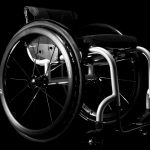Pressure sores are common after SCI. They can affect as many as one third of people with a SCI each year and almost every person with a SCI experiences at least one pressure sore in their lifetime. The risk of pressure sores increases over time when living with an SCI long-term.
Pressure sores can have serious consequences
According to evidence collected by the Spinal Cord Injury Rehabilitation Evidence (SCIRE) project in Canada, pressure sores can have serious consequences for health, function, and quality of life, including:
- Difficult and lengthy healing
- Infections, including severe infections that lead to a life-threatening condition called sepsis
- Long and costly hospital stays and re-hospitalisations
- Reduced independence and mobility during healing
- Inability to participate in work and school during healing
- Reduced life satisfaction and quality of life
- A greater need for assistance from caregivers and family during healing
Prevention is essential to reduce risk
The best management for pressure sores is prevention. In fact, many pressure injuries are preventable through a combination of good self-care, staying healthy, and regular check-ups with your health team. It is essential to learn how to recognise, prevent and treat pressure sores as soon as possible after your SCI to help reduce your risk.
Pressure sores happen because of many different factors from both inside and outside the body. There are a number of changes to the body after SCI that make pressure sores more likely. These factors, combined with forces like pressure, friction, and shear, can cause pressure sores.
Why pressure sores occur
Pressure sores usually form on weight-bearing areas of the body that are in contact with supporting surfaces. This usually happens when sitting or lying in the same position for a long time or when positioned on a surface that does not support the weight properly (such as a hard chair).
Pressure usually happens in specific areas depending on the position, but most often affects the sit bones (ischial tuberosities), tailbone (sacrum and coccyx), heels, backs of the knees, elbows, back of the head, and shoulder blades.
Too much pressure can prevent blood from reaching the area, which is important for bringing oxygen and nutrients to the tissues. This can lead to skin damage or breakdown. Skin breakdown can happen quite quickly (in even 30 to 60 minutes) on a hard surface without changing positions regularly.
Friction and shear
Pressure sores can also be caused by friction and shear. Friction can happen when the skin is rubbed on a course surface, such as sitting on an uneven wrinkle of clothing or rough surface. This can cause injury to the surface of the skin which can lead to skin breakdown.
Shear is a type of force where the skin goes one way and the body goes the opposite direction. This usually happens when the skin is caught on a surface while the body is moved. For example, when transferring in bed, the skin might be pulled along the bed while the person shifts positions, which causes shear. Shear strains and injures the tissues close to the bone.
Read more about pressure sores on the SCIRE Web site.






Recent Comments